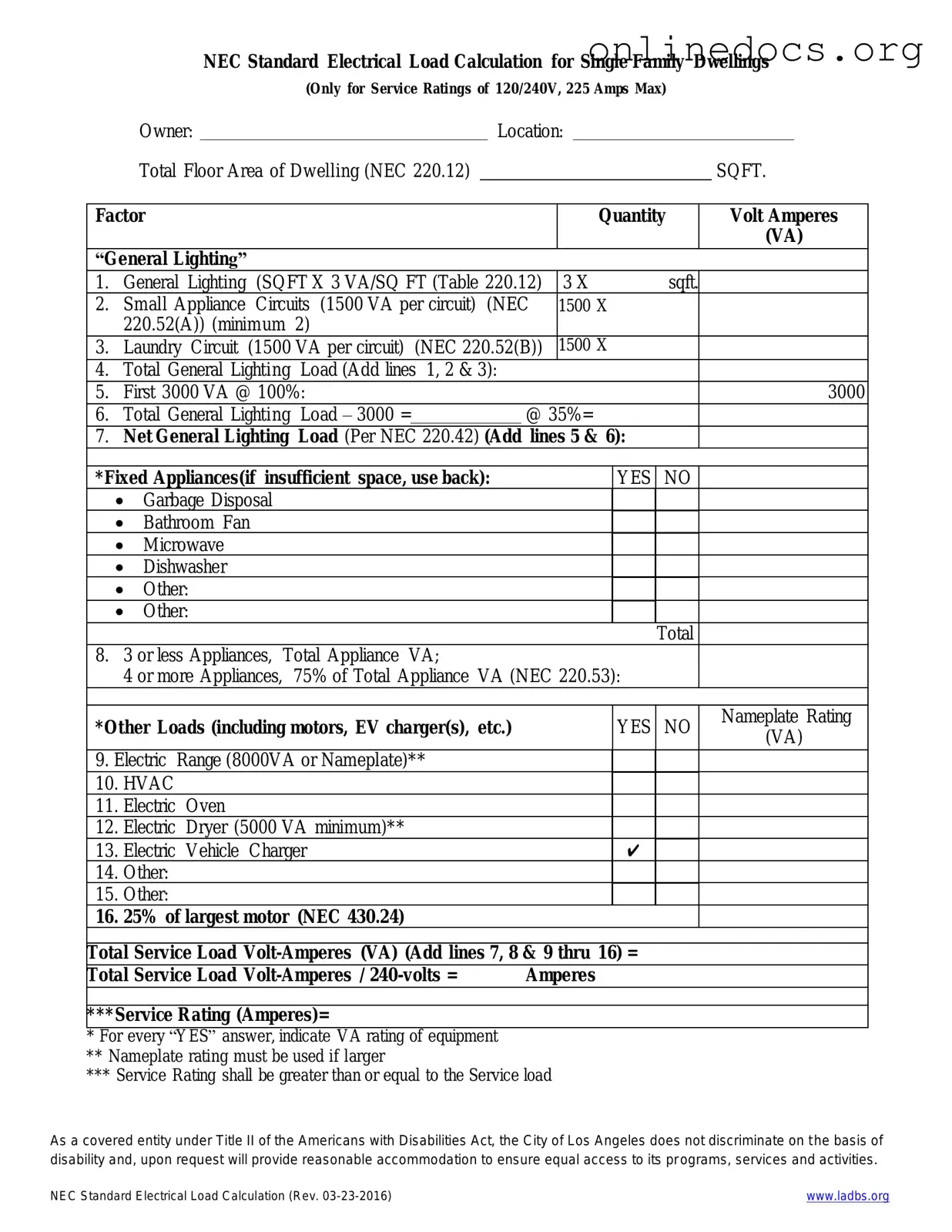Filling out the LADBS NEC Standard Electrical Load Calculation form can be a straightforward process, but several common mistakes can lead to complications. One frequent error occurs when individuals fail to include all applicable loads. Each electrical device or system in a building contributes to the total load, and omitting any can result in an inaccurate calculation.
Another common mistake is miscalculating the demand factors. Demand factors are essential for estimating the maximum load a system will experience. Incorrectly applying these factors can lead to either overestimating or underestimating the required electrical capacity, which may cause issues during inspections.
People often neglect to verify the ratings of their electrical equipment. Each piece of equipment has a specific rating that must be documented accurately. Failing to do so can result in discrepancies between the actual load and what is reported, creating potential safety hazards.
Inaccurate unit conversions can also pose a significant problem. For example, mixing up kilowatts and watts can lead to substantial errors in calculations. It is crucial to ensure that all units are consistent throughout the form.
Many individuals overlook the importance of including future expansion loads. Planning for potential growth is vital for ensuring that the electrical system can accommodate increased demand over time. Ignoring this factor can lead to costly upgrades down the line.
Another mistake is not considering the diversity of loads. Different electrical devices do not always operate simultaneously at full capacity. Failing to apply appropriate diversity factors can result in an inflated load calculation.
In some cases, people misinterpret the instructions on the form. Each section has specific requirements, and misunderstanding these can lead to incomplete or incorrect submissions. Taking the time to read and understand the instructions is essential.
Additionally, individuals may forget to include essential supporting documentation. This documentation can provide necessary context for the calculations made. Without it, the form may be deemed incomplete, delaying the review process.
Errors in arithmetic can also derail an otherwise accurate calculation. Simple mistakes in adding or multiplying values can lead to significant inaccuracies. Double-checking calculations can help prevent this issue.
Lastly, neglecting to sign and date the form is a common oversight. A missing signature can result in the form being rejected or delayed. Ensuring that all required signatures are present before submission is a crucial final step.
